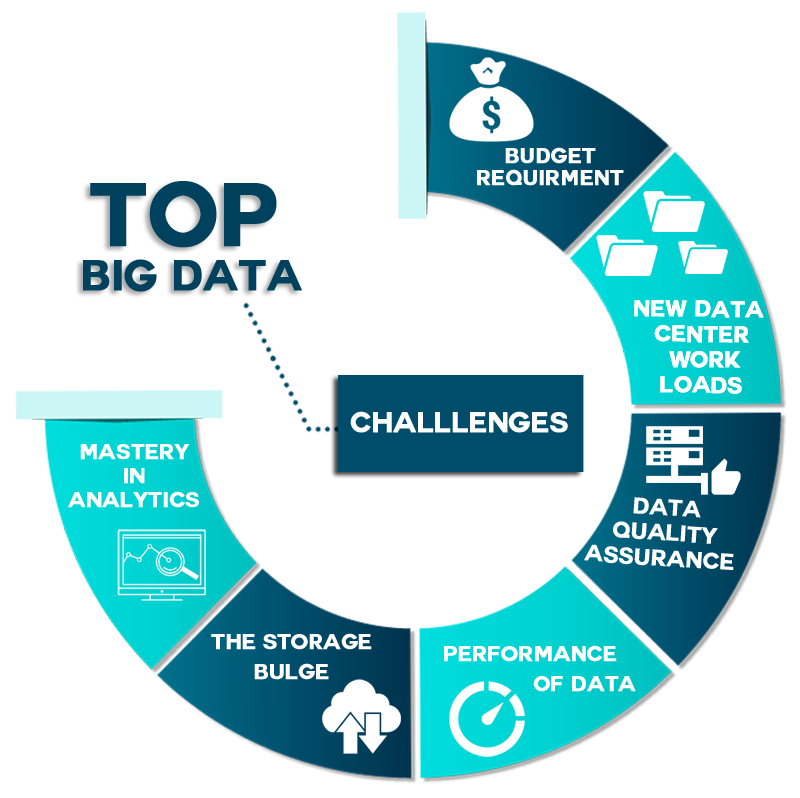Big data is the base for the next revolution in the field of Information Technology. Companies today irrespective of their size are making huge investments in the field of big data analytics. This traction comes because of the obvious competitive advantages that data provides in today’s market landscape. Consider this, for a typical Fortune 1000 company, a 10% increase in available data can translate to more than $65 million increase in the net income. Unfortunately, companies have largely been unsuccessful in making sense out of data. According to a NewVantage Partners survey, only 37.1% of the companies surveyed believe that they were successful in their big data endeavor. Hence, it is important to understand the prominent big data challenges and the steps you should take to overcome them. Here are the common top 6 challenges that organizations encounter in their big data initiatives: 
Complexity of managing data quality: Solution
There is a whole bunch of techniques dedicated to cleansing data. But first things first. Your big data needs to have a proper model. Only after creating that, you can go ahead and do other things, like:
- Compare data to the single point of truth (for instance, compare variants of addresses to their spellings in the postal system database).
- Match records and merge them, if they relate to the same entity.
But mind that big data is never 100% accurate. You have to know it and deal with it.
Tricky process of converting big data into valuable insights: Solution
The reason that you failed to have the needed items in stock is that your big data tool doesn’t analyze data from social networks or competitor’s web stores. While your rival’s big data among other things does note trends in social media in near-real-time. And their shop has both items and even offers a 15% discount if you buy both. The idea here is that you need to create a proper system of factors and data sources, whose analysis will bring the needed insights, and ensure that nothing falls out of scope. Such a system should often include external sources, even if it may be difficult to obtain and analyze external data.
Troubles of upscaling: Solution
The first and foremost precaution for challenges like this is a decent architecture of your big data solution. As long as your big data solution can boast such a thing, fewer problems are likely to occur later. Another highly important thing to do is designing your big data algorithms while keeping future upscaling in mind. But besides that, you also need to plan for your system’s maintenance and support so that any changes related to data growth are properly attended to. And on top of that, holding systematic performance audits can help identify weak spots and timely address them.
Dangerous big data security holes: Solution
The precaution against your possible big data security challenges is putting security first. It is particularly important at the stage of designing your solution’s architecture. Because if you don’t get along with big data security from the very start, it’ll bite you when you least expect it.
Paying loads of money: Solution
The particular salvation of your company’s wallet will depend on your company’s specific technological needs and business goals. For instance, companies who want flexibility benefit from the cloud. While companies with extremely harsh security requirements go on-premises. There are also hybrid solutions when parts of data are stored and processed in cloud and parts – on-premises, which can also be cost-effective. And resorting to data lakes or algorithm optimizations (if done properly) can also save money: Data lakes can provide cheap storage opportunities for the data you don’t need to analyze at the moment. Optimized algorithms, in their turn, can reduce computing power consumption by 5 to 100 times. Or even more. All in all, the key to solving this challenge is properly analyzing your needs and choosing a corresponding course of action.
Insufficient understanding and acceptance of big data: Solution
Big data, being a huge change for a company, should be accepted by top management first and then down the ladder. To ensure big data understanding and acceptance at all levels, IT departments need to organize numerous training and workshops. To see to big data acceptance, even more, the implementation and use of the new big data solution need to be monitored and controlled. However, top management should not overdo with control because it may have an adverse effect.












